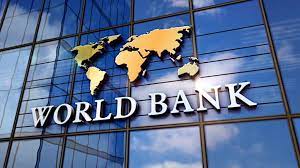World Bank warns of a severe food shortage in Borno and Yobe.

As the dry season continues, the World Bank has identified Borno and Yobe states as places where food insecurity could become a crisis within the next three months.
Top 10 countries with the worst food inflation include five African nations.
According to the World Bank, the two North East states could join other regions in the North that are reportedly experiencing “food crisis conditions,” including western and southern Katsina, northern and southern Sokoto, northern and central Zamfara, and north-western, north-eastern/southeastern Kaduna.
The Sanmatenga province in Burkina Faso, the Barh El Gazel Kanem and Lac regions in Chad are also included in the potential food crisis alert.
“In Nigeria, the regions of west and south Katsina, north and south Sokoto, north and central Zamfara; north-western, north-eastern, and south-eastern Kaduna; northeastern and southern Yobe; and western and eastern Borno will also continue to experience food crisis,” the bank forecasts. The latest Food Security Update from the bank, which was published yesterday, contains the warning.
In more precise terms, the institution warned that from this month until May, when food shortages reach their peak, the affected areas could transition from an emergency stage of food insecurity (IPC Phase Four) to a stress level of food insecurity (IPC Phase Three).
“Food insecurity is projected to worsen again in many areas, as the dry season progresses in the months ahead, particularly in regions hit hardest by conflict and insecurity,” the report points out.

Despite the recent easing, the report claims that food inflation is still a significant concern. The top three countries with the highest real food inflation rate are Zimbabwe, Rwanda, and Egypt. Food less the composite (global) inflation rate is the definition of the real food inflation rate.
Cape Verde and Uganda are included in the list in addition to the top three nations. Zimbabwe continues to hold the top spot for having the highest nominal inflation rate, with a rate of 264%.
The agriculture and cereal price indices have closed at 2% and 5% lower levels, respectively, since the last update on February 23, 2023, while the export price index has remained constant.
“The March 2023 issue of the Agricultural Market Information System (AMIS) Market Monitor highlights the uncertainty that the ongoing conflict in Ukraine has over agricultural markets. In order to rebuild global stocks and lower prices, other nations will likely need to plant more grains and oilseeds due to decreased Ukrainian production.
A recent World Bank blog issued a warning that despite declining from historical peaks, global food prices remained high and that new export restrictions might cause prices to increase once more.
In a world scrambling to avert a global famine, the report highlights some glimmering rays of hope that might make a difference. The improvements, however, pale in comparison to the gap that must be filled in order to avoid a food crisis.
Market turbulence will also be caused by uncertainty surrounding the renewal of the Black Sea Grain Initiative. Because of increased output in Canada and Russia, wheat production increased slightly in 2022 and is projected to rise by 2.1% in 2023. Despite a March revision that increased 2022 maize production, production declines in the European Union (EU), Ukraine, and the United States mean that it is still 4.5% below 2021. (U.S.).
Despite declines in Pakistan and Tanzania, rice production rose in 2022 as a result of increases in a number of nations, including India. Despite increasing 7.1% from the previous year, soybean production in 2022/23 decreased from last month due to lower-than-expected yields brought on by persistent dry conditions in Argentina and Paraguay that outweighed an improvement in India. Conditions for winter wheat in the northern hemisphere are variable in parts of India, Russia, the Ukraine, and the United States. In the southern hemisphere, Argentina is starting to harvest the early-planted maize crop, and Brazil is starting to harvest the spring-planted crop and sow the summer-planted crop, according to the report.








